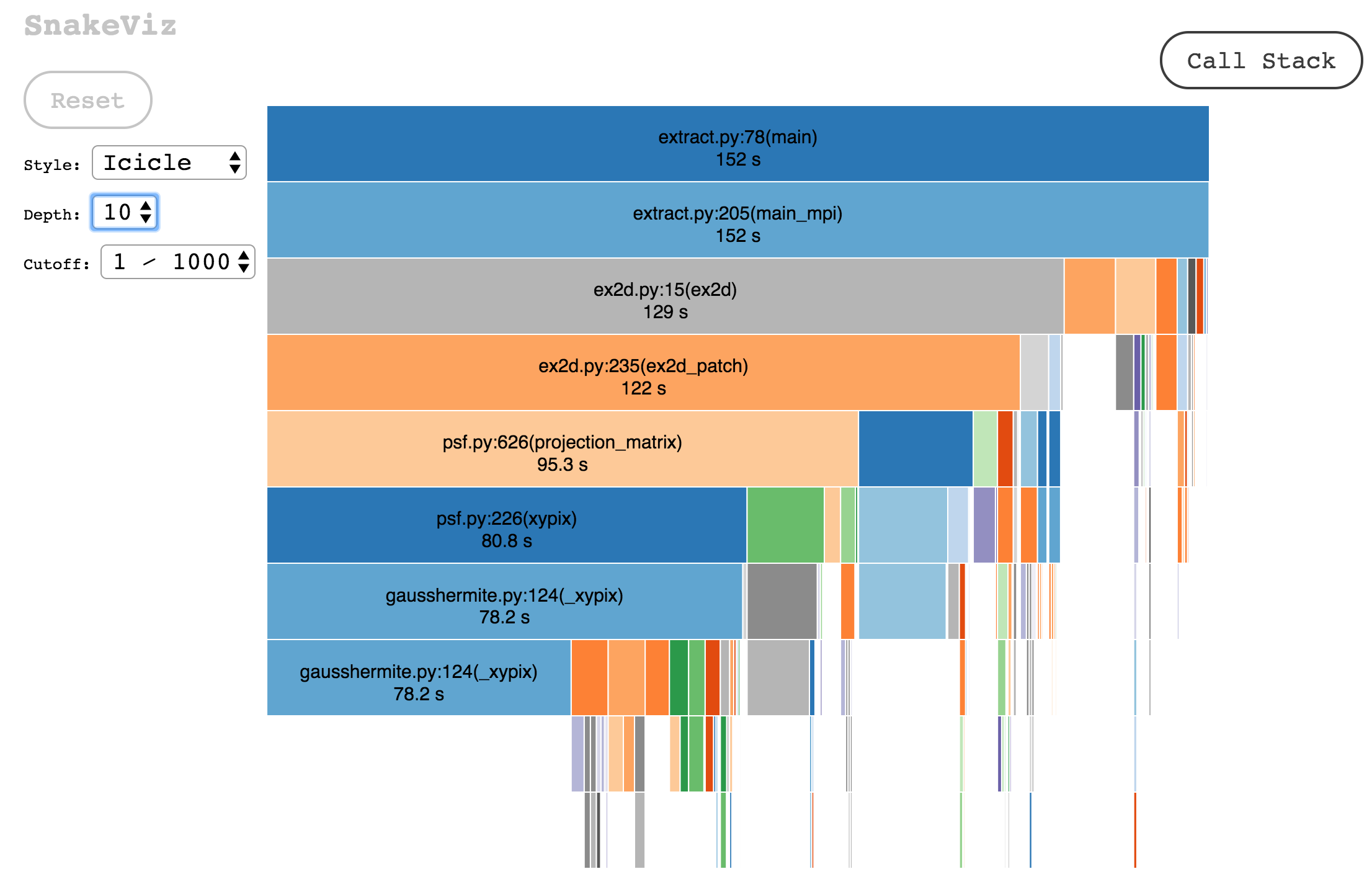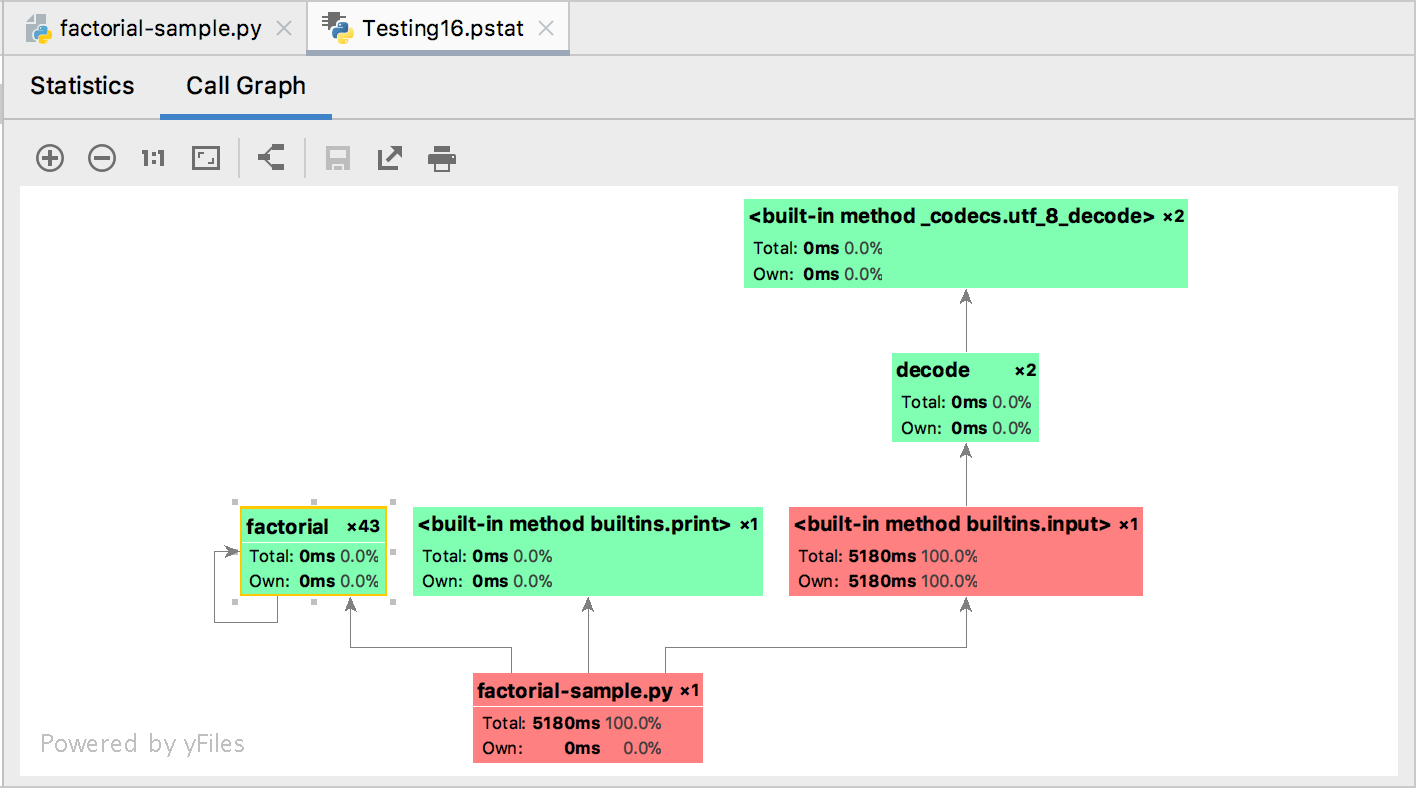

- #Python library reference the python profiler install
- #Python library reference the python profiler code
Profile.to_widgets() profile.to_file(output_file="movies_profiling.html") If the profile report is not generated your notebook then you can also use this command.We call pp.profilereport() which is a pandas function used to extract and generate the overall report of the dataset.This command will give all the detailed analysis of your loaded dataset. We will use the command for quick analysis.This command will give a quick analysis of the dataset like the count, mean, standard deviation of the parameters the dataset contains.

This command will show the first five rows of the dataset for a quick look through the data as output. You can load the respective dataset you want to explore along with its file path. I have taken here a movies_dataset stored in the G folder of my system. movies_df=pd.read_csv("G:\movie_dataset.csv").Let’s perform a quick analysis report of the dataset we are using the ‘pandas-profiling’ library.
#Python library reference the python profiler install
conda install -conda-forge pandas_profiling. If you are using conda use the following command. Let’s perform a quick analysis report of any dataset we are using the ‘pandas-profiling’ library.įirst, let’s learn the necessary commands for installing and uninstall pandas-profiling in the system. I came across a very interesting topic named ‘pandas-profiling ‘ which is extensively used for quick overall analysis report of any dataset you load & that helps to estimate your approach towards your building up the model. The panda s library is mostly used in terms of building a machine learning model especially for Exploration Data Analysis for example reading the dataset, defining Dataframes, merging datasets, concatenate columns, and also zipping the two Dataframes into single Dataframe. If the -o option is omitted, a default output file will be chosen based on the name of the profiled program here, output.log is the file which will contain the profiling results.We know for extensive data analysis and to develop a machine learning model we use different libraries like the use of Pandas, Numpy & Matplotlib. Obviously, in the above, yourprogram.py is the program being profiled and args are the desired arguments to be supplied to the program, if any. Python lsprofcalltree.py -o output.log yourprogram.py args The script can be used to run a program as follows: The lsprofcalltree.py script (referenced in comments on this blog entry) provides output which can then be used by KCachegrind to visualize the most time-consuming functions in a program, presented using tree map, call graph and list views. See the Scalene home page for installation and usage instructions. Scalene profiles copying volume, making it easy to spot inadvertent copying, especially due to crossing Python/library boundaries (e.g., accidentally converting numpy arrays into Python arrays, and vice versa). Scalene produces per-line memory profiles, making it easier to track down leaks. It accomplishes this via an included specialized memory allocator. #Python library reference the python profiler code
In addition to tracking CPU usage, Scalene also points to the specific lines of code responsible for memory growth. Most Python programmers aren't going to optimize the performance of native code (which is usually either in the Python implementation or external libraries), so this helps developers focus their optimization efforts on the code they can actually improve.
Scalene separates out time spent running in Python from time spent in native code (including libraries). This level of detail can be much more useful than the function-level profiles returned by most profilers. Unlike most other Python profilers, Scalene performs CPU profiling at the line level, pointing to the specific lines of code that are responsible for the execution time in your program. 
Its overhead is typically no more than 10-20% (and often less). It uses sampling instead of instrumentation or relying on Python's tracing facilities. The Scalene profiler is both easy to use and provides a number of advantages over the profilers bundled with Python:







 0 kommentar(er)
0 kommentar(er)
